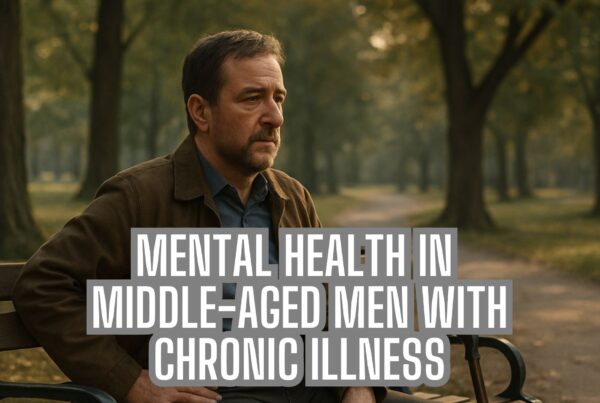Understanding the Rise in Anxiety and Depression Diagnoses in Australia
Understanding the Rise in Anxiety and Depression
Over recent years, there’s been a noticeable surge in the number of Australians diagnosed with depression and anxiety. Data from the Housing Income and Labour Dynamics (HILDA) Survey, which monitors the lives of 17,500 Australians, reveals this trend. Especially among the youth, the numbers are striking. For instance, young women between the ages of 15 and 34 saw an increase in these diagnoses from 12.8% in 2009 to 20.1% in 2017. Similarly, young men witnessed a rise from 6.1% to 11.2%. In this blog, we’ll focus on understanding the rise in anxiety and depression diagnoses in Australia.
Decoding the Data: Is Mental Health Truly Deteriorating?
While these statistics might seem alarming, it’s essential to delve deeper and understand what they truly signify. The HILDA surveys focus on the “reported diagnosis” of depression and anxiety disorders. It’s possible that many individuals with these conditions were previously undiagnosed. The rise could be attributed to more people seeking professional assistance and subsequently receiving a diagnosis.
To determine if there’s an actual increase in these conditions, it’s more insightful to assess public symptoms rather than diagnoses. The National Health Survey has been doing this for nearly two decades. Interestingly, their findings suggest that the overall mental health of Australians has remained stable over the years.
Diagnosis vs. Actual Mental Health Conditions
It appears that while the mental health of Australians isn’t deteriorating, there’s a higher likelihood of receiving a diagnosis. This increased diagnosis rate aligns with the fact that Australians are quickly adopting treatments for mental health issues. For instance, the use of antidepressants has been on an upward trajectory for years, placing Australians among the world’s top users. Currently, one in ten Australian adults consumes an antidepressant daily.
Furthermore, psychological treatments have seen a significant rise, especially after the introduction of Medicare coverage for psychology services in 2006. However, the real question is why, despite the surge in diagnosis and treatment, there hasn’t been a noticeable improvement in overall mental health.
Challenges in Treatment Quality
While there are effective treatments available for depression and anxiety disorders, the quality of treatment that many Australians receive often doesn’t meet the ideal standards. For instance, while antidepressants are best suited for severe depression, they are frequently prescribed for mild symptoms stemming from challenging life situations.
Effective psychological treatments require multiple sessions. Recommendations suggest around 16 to 20 sessions to treat depression. However, many individuals only receive a couple of sessions, which might not lead to significant improvement. Moreover, treatments aren’t always accessible to those who need them most. Older individuals are the primary users of antidepressants, even though younger people are more prone to severe depression. Similarly, residents of wealthier areas are more likely to undergo psychological therapy, even though depression and anxiety disorders are more prevalent in less affluent regions.
The Overlooked Importance of Prevention
One significant area that requires attention in the realm of mental health is prevention. The 20th century witnessed remarkable advancements in physical health in Australia, with significant reductions in premature deaths. A lot of this progress was due to disease and injury prevention. A similar approach could be beneficial for mental health issues, which are now emerging as a primary concern for the nation’s well-being. Despite the increasing resources funneled into treatment, prevention remains largely overlooked.
Research indicates that preventing mental health issues is not only feasible but also economically viable. For instance, for every dollar spent on school-based interventions to combat bullying, there’s an estimated economic return of $14. There’s a vast potential in addressing major risk factors for mental health issues that manifest during childhood and can impact an individual throughout their life. For example, parental conflicts can increase a child’s risk for depression and anxiety disorders. On the other hand, parental warmth and affection can mitigate these risks. Training parents to minimize risk factors and enhance protective factors can be a game-changer. However, the commitment to invest in prevention has been lacking in successive Australian governments.
Reimagining Australia’s Approach to Mental Health
It’s high time to reconsider Australia’s strategy towards mental health. The Australian government’s request to the Productivity Commission to explore mental health is a step in the right direction. This inquiry stands out as it evaluates the social and economic benefits of mental health to the nation. Such a comprehensive perspective is crucial as it underscores the importance of a holistic approach to mental health, emphasizing both treatment and prevention.
Book Your FREE Half Hour Consultation With Release Hypnosis NOW!
You may also like to read:
Breaking Addiction Through Counselling and Hypnosis
The Truth About Hypnotherapy and Smoking Cessation
Facts About Habits That Might Surprise You
Enjoy a Mini-Mindfulness Meditation








